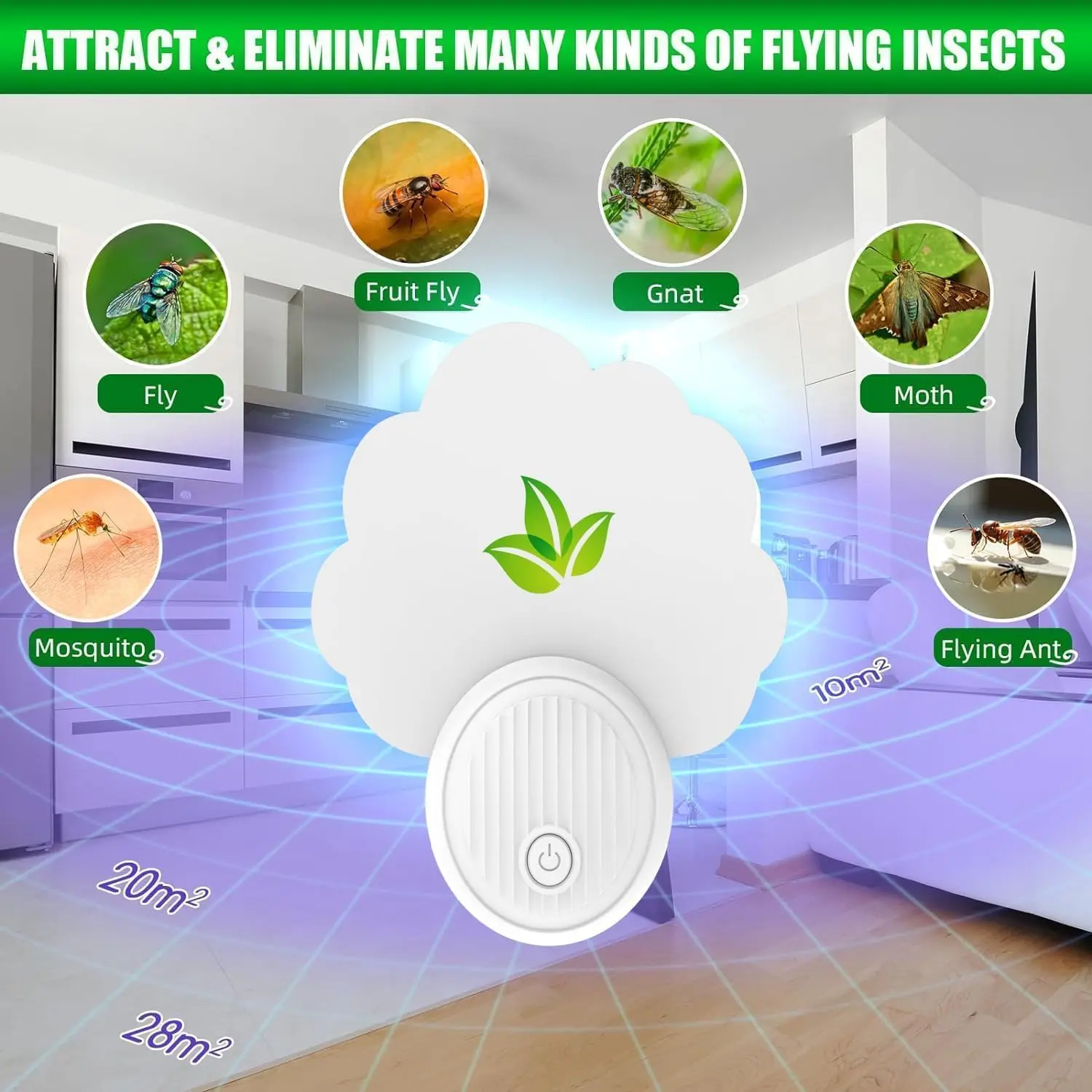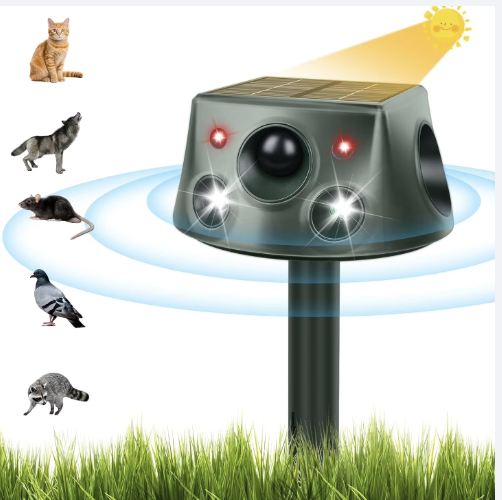Solar Animal Repellents: The Ideal Solution for Organic Farms
Understanding Solar Animal Repellents for Organic Farms
The Growing Need for Eco-Friendly Pest Control
Sustainable farming practices have become essential due to environmental concerns and changing consumer preferences. The organic agriculture sector, as reported by the Organic Trade Association, has witnessed significant growth over the past decade, driven by a demand for cleaner products. To maintain such practices, minimizing chemical usage is crucial. Traditional synthetic pesticides can harm beneficial insects, soil health, and local wildlife. This situation underscores the interest in eco-friendly alternatives like solar animal repellents, which provide a non-toxic solution for pest control, aiding organic farmers in aligning with eco-friendly goals.
Core Principles of Solar-Powered Animal Repellents
Solar-powered animal repellents provide an innovative solution leveraging renewable energy sources. These devices operate independently of external electricity, ensuring long-term cost efficiency and consistently addressing pest issues without interruption. Their mechanism involves using the natural behaviors of animals, alongside ultrasonic technology, to effectively deter pests from infringing on farm areas. This technology does not cause harm, making it particularly appealing to organic farmers focused on ethical and sustainable practices.
Why Traditional Methods Fall Short for Organic Farming
Traditional pest control methods often fail to align with the principles of organic farming. Chemical pesticides, while effective initially, do not adhere to organic certifications and can lead to severe consequences, including pests developing resistance. According to various studies, continuous use increases application rates, which in turn harms non-target species and depletes soil health. Organic farms face the challenge of balancing pest control with ecological safety, making solar repellents more suitable than traditional pesticides for long-term sustainability and efficiency in pest management.
How Solar-Powered Animal Repellents Work
Harnessing solar energy for continuous operation
Solar panels are a crucial component of solar-powered animal repellents, providing a consistent and renewable energy source in remote areas lacking access to traditional power systems. This continuous operation ensures that the repellents are effective day and night, making them highly suitable for agricultural settings where pests may strike at any time. Besides their efficiency and reliability, the use of solar energy in these devices offers significant economic advantages by reducing the operational costs associated with electricity. Moreover, opting for solar-powered systems aligns with sustainable farming practices, contributing positively to environmental conservation by minimizing carbon footprints.
Motion sensor technology: Detecting intruders intelligently
Motion sensor technology enhances solar animal repellents by intelligently detecting the presence of animals and triggering deterrent mechanisms only when necessary. These sensors prevent unnecessary emissions, conserving energy and extending the lifespan of the devices. By focusing solely on detected intrusions, the systems offer targeted deterrence which minimizes disruptions to ecosystems and protects non-target wildlife from interference. This approach not only supports organic farming principles but is also economically beneficial as it reduces the need for constant human supervision and intervention.
Ultrasonic frequencies: Nature-friendly deterrent system
Utilizing ultrasonic frequencies, solar animal repellents offer a nature-friendly deterrent system that effectively causes discomfort to invading animals without causing harm. These frequencies are inaudible to humans, ensuring that their usage doesn't disturb residents or workers in close proximity. According to research, ultrasonic technology aligns with humane solutions, reinforcing the principles of organic farming by deterring pests without inflicting physical harm. As farms aim to preserve a balance in the local ecosystem, solar-powered repellents serve as eco-friendly and efficient alternatives that maintain harmony between agriculture and wildlife.
Critical Features for Effective Solar Repellents
Adjustable Frequency Ranges for Different Pests
One critical feature in effective solar repellents is their adjustable frequency settings. This capability is essential because it allows the device to be tailored to address a variety of pests, ranging from rodents to deer and birds. Different species respond uniquely to specific frequencies; thus, a one-size-fits-all approach is often ineffective. By adjusting frequencies, users can enhance the efficiency of the repellents, targeting the particular pests that are prevalent in their area. This adaptability ensures a higher success rate in deterring unwanted animals and minimizes the need for additional pest control measures.
Self-Charging Capabilities and Battery Backup
Solar repellents' self-charging capabilities represent a significant advancement in pest control technology. These devices use solar panels to harness energy from sunlight, leading to a reliable and consistent operation even in regions with unpredictable weather. This is crucial for maintaining functionality at all hours, as solar panels alone may not suffice during cloudy days or nighttime. Therefore, the integration of a battery backup system ensures that the repellent remains active, providing uninterrupted protection against pest intrusions. This not only enhances their performance but also contributes to their longevity and dependability in diverse environmental conditions.
Multi-Sensory Deterrent Combinations (Light/Sound/Vibration)
The use of multi-sensory deterrent combinations, including light, sound, and vibration, is another effective strategy for repelling animals. This method creates a comprehensive approach to pest deterrence by simultaneously targeting multiple senses of invading animals. The combined effects of these stimuli are more likely to repel pests compared to single-sensory triggers. In fact, numerous studies have shown that integrating various sensory cues can significantly improve the success rate of these systems. By producing overwhelming and unsettling experiences, these multi-sensory deterrents provide an efficient solution to preventing animal intrusion in farming environments.
Real-World Success Stories in Organic Agriculture
Case Study: Reducing Crop Loss in Citrus Orchards
One notable case study comes from a citrus orchard that implemented solar animal repellents, yielding impressive results. This farm reported a measurable reduction in pest-related crop loss over time, which was directly attributed to the strategic placement of these repellents throughout the orchard. The solar-powered devices effectively deterred pests such as birds and rodents, which are known to cause significant damage to citrus crops. As a result, the farm not only experienced increased yields but also saw a reduction in pest management costs, demonstrating the economic advantages of using these advanced repellents.
Protecting Grain Stores from Rodent Invasions
An inspiring example of using solar-powered animal repellents comes from a grain farmer who successfully protected his stores from rodent invasions. By forming a protective boundary using these eco-friendly devices, the farmer witnessed a significant decrease in rodent activity. Statistics from this initiative revealed improved functionality of grain storage, along with decreased instances of pest-related damage. This proactive approach not only preserved grain quality but also reduced financial losses associated with rodent infestations, showcasing the practical benefits of solar repellents in safeguarding valuable produce.
Safeguarding Vegetable Patches from Deer and Rabbits
Another compelling story is that of an organic vegetable farmer who faced frequent incursions from deer and rabbits, threatening their crop production. By installing solar repellers, the farmer successfully deterred these animals and protected the vegetable patches. A quantitative analysis of the farm's output before and after the system's installation revealed notable improvements in crop survival rates. The investment in solar repellents proved to be highly effective, serving as a robust solution for managing wildlife without resorting to harmful chemical repellents. These real-world success stories highlight the potential of solar animal repellents in significantly enhancing organic agricultural practices.

Installation and Optimization Strategies
Ideal placement for maximum coverage
To maximize the effectiveness of solar repellents on your farm, strategic placement is crucial. You need to consider factors such as terrain and pest movement patterns when deciding where to install your solar repellents. For instance, placing these devices near entry points or areas where wildlife typically congregate can significantly enhance coverage.
- Consider the terrain: Whether your farm is flat or hilly, understanding how pests move across the landscape helps in positioning the units effectively.
- Entry points: Identify areas where animals typically enter the farm and install units closely.
By arranging multiple units to form a comprehensive perimeter, you can create a formidable barrier against uninvited visitors.
Combining units for large-scale farmland protection
Large-scale farms face diverse pest threats that require a more robust protection strategy. Combining multiple solar animal repellent units is an effective solution for safeguarding extensive farmland. Implementing an interconnected system increases their protection capabilities.
- Strategic grouping: Create clusters of units at crucial points to ensure no area is left vulnerable to pests.
- Case examples: Farms using a network of devices have reported notable reductions in crop damage.
This approach provides reinforced coverage, proving particularly beneficial in areas prone to multiple pest invasions.
Seasonal maintenance and performance checks
Routine checks and regular maintenance are vital to ensure your solar repellents remain effective throughout the year, especially with changing seasons. Neglecting these tasks can lead to decreased performance and increased pest activity.
- Check functionality: Regularly verify that the solar panels and sensors are clean and in good working order.
- Recommendations: Expert tips from agricultural extension services emphasize seasonal maintenance before major weather shifts to ensure uninterrupted performance.
Following these guidelines will ensure that your solar animal repellents continue to protect your farm reliably, safeguarding your crops from pests year-round.
FAQ
What are solar animal repellents? Solar animal repellents are devices that use solar energy to power mechanisms that deter animals from farm areas using ultrasonic sound or other methods.
Why are solar-powered repellents preferred for organic farming? They offer a non-toxic, sustainable solution to pest control that aligns with the principles of organic farming by minimizing environmental impact.
How do solar panels help in pest control? They provide a renewable energy source for devices that deter pests both day and night, making them cost-effective and environmentally friendly.
Can solar repellents deter different types of pests? Yes, many solar repellents offer adjustable frequency settings to target a variety of pests, including rodents, birds, and larger wildlife like deer.
What maintenance is required for solar animal repellents? Regular checks to ensure solar panels and sensors are functioning properly, alongside cleaning and occasional system updates, are vital for optimal performance.

 EN
EN



















































